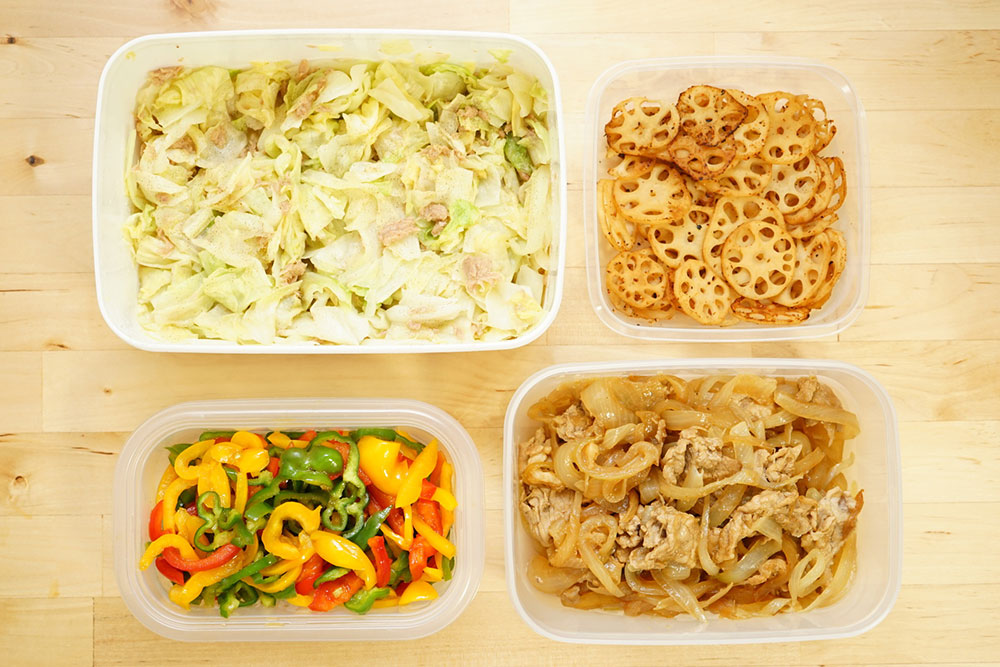11 easy ways to keep food and leftovers fresh longer

Preserving perishable food items has become essential in modern life. Throwing out a perfectly cooked meal or good produce just because it wasn’t stored properly can be heartbreaking, not to mention environmentally wasteful. So, one is advised to follow proper storage methods for perishables. Simply stuffing leftovers into the fridge does not always guarantee freshness. Each food item requires specific care. Here are some proven ways to keep food and leftovers fresh for a long time.
Start fresh
One way to store food for a long time is to buy fresh fruits and veggies in the first place. Look for richly colored leafy greens without limp or yellowing leaves. Root vegetables, cabbages, squash, and onions should feel heavy for their size and be free of blemishes or soft spots. If you rely on grocery delivery, choose produce types that last longer. Now, let’s talk about how to store them effectively.
Containers matter
It is important to ensure that the storage containers are all leak-proof. Resealable packages have airtight seals that do not expose food to air. These can include zip-lock bags or glass containers. One can also use wraps for the same purpose, but ensure they tightly secure the food and do not cause leakage or aerial exposure. Airtight containers keep foods fresh for a long time because they create a barrier against external factors in the refrigerator, like air, moisture, or even odors from other food items. This feature slows down the process of oxidation or growth of bacteria and keeps the food fresh for a long time. Additionally, it is best to store the leftovers in flat containers to cool faster.
Always eat/cook the oldest food first
It is a commonly known fact that one should not eat the food that’s spoiled. However, it is advised to follow a specific order while emptying the fridge. It’s best to cook or consume food items that one had brought earlier rather than the latest additions.
Know which foods to refrigerate
One may be tempted to refrigerate all edibles, assuming it will keep them fresh longer. However, several foods perish faster in colder temperatures. Some examples of foods that do not fare well in the fridge include watermelon, potatoes, onions, coffee, garlic, honey, and bread. On the other hand, the ones that should rather go into the fridge after use include all cooked foods, grapes, jams, tortillas, apples, eggplant, berries, broccoli, and leafy greens.
Make smoothies
Another way to boost one’s nutritional content and ensure that fruits and greens remain fresh for longer is to turn them into smoothies. This process is especially advisable for any perishables that are on the last day of freshness. Adding nut butter or a sweetener like honey can also enhance the flavor. Additionally, one can freeze these fruits and use them later to make refreshing frozen treats or popsicles.
Keep track of expiration dates
Expiration dates usually talk about the food quality. There may be different dates on the package one needs to be mindful of. For example, the “sell-by” date is for the store owner to display the products, while the “best if used by” date implies that the flavor or quality of the food will be optimal until the specified time. Following these instructions means one may be more aligned with the food quality and optimize storage and freshness.
Refrigerate as soon as possible
After cooking and eating meals, the leftover food should go into the refrigerator within two hours. Following this process is a proven way to increase its freshness and reduce the risk of foodborne illness. Keeping the food outside can accelerate bacterial growth and make it more susceptible to spoilage. Some bacteria survive cooking and can grow if food sits at room temperature for long periods. The safe window for leaving cooked food out can drop from two hours to one hour if the outdoor temperature is over 90°F. Hence, foods taken out at picnic spots may spoil faster than those kept at the kitchen counter due to the warmer environment promoting bacterial growth.
Check refrigerator temperature
Make sure that one’s refrigerator is at 40°F or higher. Do not completely trust the default settings. It’s best to use a fridge thermometer if one wants more accuracy. This way, the foods kept in do not get spoiled quickly.
Do not refrigerate opened canned food
Also, avoid storing leftover soup broth, tuna fish, cranberry sauce, or canned foods in the refrigerator. When cans are opened, metal residue on the rim can seep into the food, affecting its taste with a metallic flavor.
Avoid keeping veggies and fruits in containers
When storing uncooked fruits or vegetables, it’s crucial to allow them to be exposed to air at room temperature. Typically, they’re packed in perforated plastic bags, and letting them breathe can help maintain their freshness and prevent premature spoilage. Therefore, it’s advisable to let store-bought and plastic-packaged food items like bananas, onions, and potatoes breathe to extend their shelf life.
Store food in the right places
Where the food is stored significantly affects how long it stays fresh. Different types of food need specific storage conditions. For example, fruits and veggies remain best in the crisper drawer, where the temperature is more stable. On the other hand, dairy products like milk and cheese should go in the coldest part of the fridge, usually toward the back.



